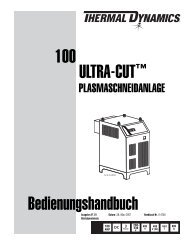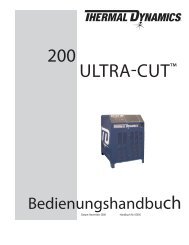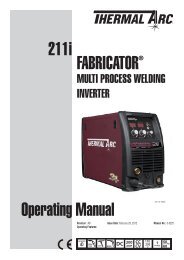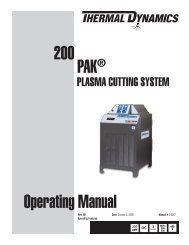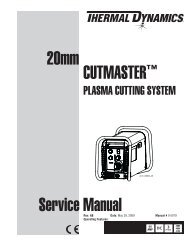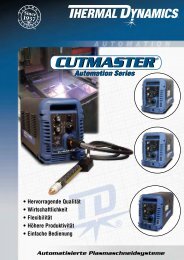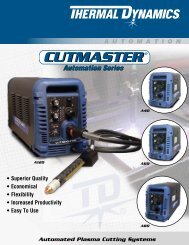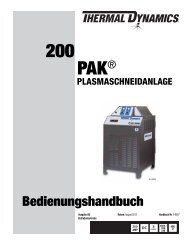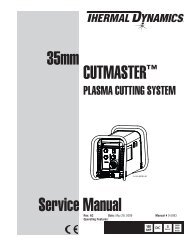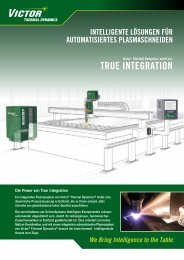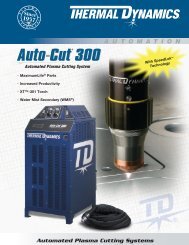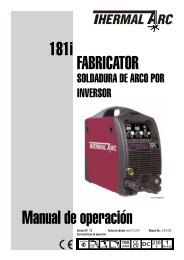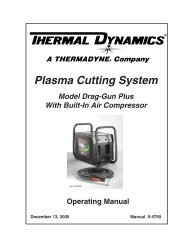DocLib_42_0-4905 ArcMaster 400MST CE.pdf - Victor Technologies ...
DocLib_42_0-4905 ArcMaster 400MST CE.pdf - Victor Technologies ...
DocLib_42_0-4905 ArcMaster 400MST CE.pdf - Victor Technologies ...
Create successful ePaper yourself
Turn your PDF publications into a flip-book with our unique Google optimized e-Paper software.
Description Possible Cause Remedy<br />
12 Arc start is not<br />
smooth.<br />
10.04 Stick Welding Problems<br />
A Tungsten electrode is too<br />
large for the welding current.<br />
B The wrong electrode is being<br />
used for the welding job.<br />
45<br />
A Select the right size electrode.<br />
Refer to Basic TIG Welding<br />
Guide.<br />
B Select the right electrode type.<br />
Refer to Basic TIG Welding<br />
Guide.<br />
C Gas flow rate is too high. C Select the correct rate for<br />
the welding job.<br />
Refer to Basic TIG Welding<br />
D Incorrect shielding gas is<br />
being used.<br />
E Poor work clamp connection<br />
to work piece.<br />
Guide.<br />
D Select the right shielding gas.<br />
Refer to Basic TIG Welding<br />
Guide.<br />
E Improve connection to<br />
work piece.<br />
Description Possible Cause Remedy<br />
1 Gas pockets or<br />
voids in weld metal<br />
(Porosity).<br />
2 Crack occurring in<br />
weld metal soon<br />
after solidification<br />
commences.<br />
3 A gap is left by<br />
failure of the weld<br />
metal to fill the root<br />
of the weld.<br />
A<br />
B<br />
C<br />
A<br />
B<br />
C<br />
Electrodes are damp.<br />
Welding current is too high.<br />
Surface impurities such as oil,<br />
grease, paint, etc.<br />
Rigidity of joint.<br />
Insufficient throat thickness.<br />
Cooling rate is too high.<br />
A<br />
B<br />
C<br />
A<br />
B<br />
C<br />
Dry electrodes before use.<br />
Reduce welding current.<br />
Clean joint before welding.<br />
Redesign to relieve weld joint<br />
of severe stresses or use crack<br />
resistance electrodes.<br />
Travel slightly slower to allow<br />
greater build up in throat.<br />
Preheat plate and cool slowly.<br />
A Welding current is too low. A Increase welding current.<br />
B Electrode too large for joint. B Use smaller diameter<br />
electrode.<br />
C Insufficient gap.<br />
C Allow wider gap.<br />
D Incorrect sequence. D Use correct build-up sequence.<br />
Figure 8. Example of Insufficient Gap or Incorrect Sequence



